Can I float a floor over....
Current Flooring:
Dining/hallway that meets carpeted stairs up and carpeted stairs down - Hardwood that I presume is glued down.
Kitchen/Bathroom/Laundry room - Tile. Ugly, old, terrible tile that is in disrepair
SUBFLOOR: CONCRETE SLAB
I would like to unify the space with one type of flooring. I am sure that the BEST way to do this would be to tear it all up and install new, however the price of having any installers tear this flooring up is way out of our budget. It is also something I'm not super comfortable tackling on my own because I fear creating more problems than it would be worth.
So my question is - can we float a floor over the whole thing? The different flooring types are level with each other.
My two main areas for concern are:
1. A little bubble in the hard wood at the foot of the stairs that depresses slightly when stepped on. I haven't a clue how you would remedy something like that in order to install new floor over top.
2. The tile does NOT run underneath the dishwasher, so a lower profile would be best. I have measured and I think we could bring the floor under the dishwasher up to level with the tile and still install a full 3/8" thick click-lock floor, but it would sure be a tight fit.
I was initially looking into luxury vinyl plank, but saw on the Armstrong Pryzm installation instructions that wood floor over concrete slab would need to be removed. I understand that is due to it trapping moisture underneath and potentially rotting the wood. Despite not having read other luxury vinyl plank instructions, I presume that this renders all luxury vinyl plank flooring nonviable in our situation.
So if that is not an option, would something like the AquaGuard engineered hardwood be a suitable option? I just found that today and am intrigued by the low profile plus hardwood option. But does it trap moisture like the vinyl planks would? (Assuming we wouldn't use a moisture barrier, obviously) Would a 3/8" thick click-lock engineered wood be a better option for this type of install either way and I just need to grit my teeth and deal with the dishwasher situation somehow?
Here is a photo for reference. The hardwood looks way better in this picture than it truly looks in person. It's not in the best of shape. You can kind of see the flat transition there beneath the gate.

We are looking to do this ourselves, and would definitely prefer not to tear everything up. Any advice is welcomed and greatly appreciated!
Comments (36)
Andie Jr
Original Author5 years agoCan you clarify the "why" on this? Is it just because it's "the right thing to do to not be a hack" or because there would be structural issues and the flooring would fail quickly? I understand that is the best way to go, but I'm trying to get more technical understanding as to whether ANYTHING can be floated over wood on slab, just in general.
It's fine if that answer is no...I'm just trying to understand the technical aspects involved. I would be happy to even find a 5 year temporary fix until our disposable income skyrockets on the back end of daycare. I'm not thrilled with the thought of just having to live with them until then, but tearing out and replacing just isn't in the cards right now either. Just trying to figure out if there's something viable (even if temporary) in between.
Related Professionals
Rolling Hills Estates Kitchen & Bathroom Remodelers · New Braunfels General Contractors · Williston General Contractors · Concord Painters · Eastvale Painters · The Woodlands Painters · Dothan General Contractors · Hutchinson General Contractors · Monroe General Contractors · Noblesville General Contractors · Attleboro Flooring Contractors · West Islip Flooring Contractors · Mansfield General Contractors · Mira Loma General Contractors · Schertz General ContractorsUser
5 years agoIf you want to lay floors on top of the existing, you would have to: sand the existing, apply SLC, undercut every single doorway that exists, and apply shoe molding. Try more than 50% of the cost of ripping out and starting over. With a worse result by far.
Andie Jr thanked UserJoseph Corlett, LLC
5 years agoAndrea:
Removing properly adhered wood floor from concrete can be a nightmare of unimaginable proportions, especially for a DIYer. I'd do a test and have a plan "B" if I were you.Andie Jr thanked Joseph Corlett, LLCklem1
5 years agoThe bubble at foot of stairs can be dealted with by removing wood flooring in that spot then use Portland based floor leveler to fill void. The most tenacious floor tile can be removed with an electric chip hammer equipped with wide blade. Thin set that didn't have additive added or isn't epoxy base can sometimes be removed with moderate effort. Before diving in,pull up a tile to see how hard thin set is to remove.
Andie Jr thanked klem1DavidR
5 years agoI've posted this here before, but this might be another place for it. I heard it probably 50 years ago, but I have never yet tried it.
Supposedly, to remove floor tiles, just spread dry ice on the floor. The extreme cold shrinks the tiles and simultaneously makes the adhesive brittle, and they pop free. Just don't get any dry ice on your skin (instant frostbite), and ventilate well since it sublimates right into CO2.
How you get the adhesive residue off after that, I don't know.....
Andie Jr thanked DavidRAndie Jr
Original Author5 years agoThank you everyone for the responses.
Sophie Wheeler - I'm not sure why I would have to sand and apply SLC (not sure what that is)...can you explain? I'm not intending to adhere anything to the wood floor? There are only a couple of doorways that I am not concerned about undercutting, and we would be removing and replacing with new baseboards anyway.
Joseph Corlett - I imagined that would be the case, which is why we want to avoid it. Surely it's also why installers charge more than the flooring/install itself to tear it out! Considering the track record of our previous homeowners, I wouldn't put it past them to have NOT adhered it properly...but it's still not something we want to take on.
klem1 - I'm not sure it's actually a dip in the floor, it's more that the hardwood has buckled up. I think they likely didn't leave enough of an expansion gap into the stair riser. It's carpeted, so it's hard to tell, but I think they have a <1/4 strip of flooring butted up against the stair riser. So double whammy, there. Too small of a piece against a vertical surface, and no expansion gap. Thank you for the tips on the tile removal. Sadly, that is the part of this potential project that I am least concerned with.
DavidR - That is quite an interesting theory. I would just want to try it to see what happens if I'm ever in a position where I'm tearing up a tile floor anyway. I would imagine that it would, at the very least, make the tile/grout/thinset more brittle and therefore easier to chip off? Interesting, for sure.
geoffrey_b
5 years agoThe flooring manufacturers have specific guidelines of the subfloor preperation. If you don't follow their advice - you won't get any warranty.
It may be a lot of work - but having a properly prepared subfloor will give you the best look, and guarantee no problems. Go-over is a hacker job.
Andie Jr thanked geoffrey_bAndie Jr
Original Author5 years agoThank you geoffrey_b. I recognize it is a hacker job, but I think that's kind of what I'm in the market for right now. We can't afford the full tear up right now, and I would prefer not to live with these floors for 5 years. Just looking to know if we can get 5 years out of it or not, really.
I'm not expecting warranty coverage on the floors. This is not a huge area and would not be a significant cost. Knowing we intend to rip it back out in 5 years, I'm not going to be putting in the highest end stuff, just something to get us through. Maybe that sounds crazy, but to me, a hack job that functions perfectly well for 5 years is much better than living with crumbling tile floor for 5 years.
It's that "functions perfectly well" part that I'm concerned about and just can't seem to get the knowledge I'm seeking regarding the specific interactions that would be occurring with this type of install.
geoffrey_b
5 years agoKnowing we intend to rip it back out in 5 years
I predict once it's down, you're not going to remove it - because now you will have TWO floors to rip out.
It's that "functions perfectly well" part that I'm concerned about and just can't seem to get the knowledge I'm seeking regarding the specific interactions that would be occurring with this type of install.
You want knowledge about how a product will perform that is installed incorrectly?
That's a silly question.
User
5 years agolast modified: 5 years agoWho has money to waste doing it incorrectly multiple times, but not to do it correctly once?
Installing flooring requires subfloor prep. As in that all has to be incredibly flat. 1/16” in 10’. You cannot go over an unprepared existing flooring or the new floor will FAIL. You’ll do work and expense for that over old floors, or over old subfloors. Why waste all of that effort on something you’re going to rip out later? That’s just TV idiocy.
You’ll have to replace all the base trim and casings when you redo it. You’ll have to undercut everything for a double thickness floor. Then you’ll have a big gap when you remove that double thickness floor. And that’s just a completely foolish and more expensive route than doing it correctly, once.
This is one of the most foolish and wasteful ideas to ever appear on this forum. Just paint the darn floor if you can’t stand it. But don’t flush money down the toilet because you’ve been watching too much HGTV and they make you feel inferior for not being Joanna Gaines approved. That dreck isn’t real life.
 Signs · More Info
Signs · More Info
Andie Jr
Original Author5 years agolast modified: 5 years agoSophie Wheeler:
Not that any of this matters, but in response to your items - I am aware it requires subfloor prep. That would happen (except nothing I've read indicates that sanding is necessary). We intend to replace the baseboards regardless of whether we do anything to the existing wood right now and we intend to replace the interior doors at the time the flooring would be done correctly, which we plan to do once we are out of daycare (the payments for which, in my area, are more than our mortgage...which is why we don't want to spend the money to tear it out right now, but will be able to in 5 years or so).
You can leave the "foolish and wasteful" part up to me to decide, thanks. I have tile in disrepair. It is losing filler and sharp edges are forming. I need to do something about it as it poses a hazard to my young child and our bare feet. Since the hardwood area is not that large, it would only mean a few extra hundred dollars of square footage and some added elbow grease, which to me, is not foolish and wasteful in my current situation assuming the install over the wood is a viable install for the amount of time I need it to be viable. That was not an assumption I was willing to make.
That's why I came here....to bend the ears of the knowledgeable. I had hoped for more than "You just have to tear it out". I had hoped for possible solutions I hadn't considered. For what it's worth - The "plan" all along has been to just deal with the tile and leave the wood flooring alone anyway. Is it so bad to want to explore the viability of other preferable options before dismissing them outright as "just not the way you do it"? If you can't be kind in helping someone through that decision process, then I think I'll keep my questions out of this forum from now on. (I'm sure that won't upset you. One less HGTV watching, Joanna Gaines want-to-be out of the idiot box, right? Which, by the way...I couldn't give a flip about Joanna Gaines, nor do I watch HGTV....but if spewing harsh criticisms towards internet strangers just seeking guidance and understanding through a decision process is your thing....you do you, I guess.)
Andie Jr
Original Author5 years agoGeoffrey_B:
That's a silly question.
I don't think it's such a silly question to want to know WHY it's considered incorrect. Maybe it's just the engineer in me, but accepting a "you just can't" answer is not really in my wheelhouse. But I'm also not going to completely disregard it and just do it anyway. I am not a hack to that extent. That's why I'm here. Was just hoping to get the "why" answer and then make the judgement against my situation armed with that knowledge, that's all.
millworkman
5 years ago"I have tile in disrepair. It is losing filler and sharp edges are forming. "
Thats why it needs to be removed. While still not advisable you can tile over a sound and solid tile floor. However if it is having issues like that it WILL ruin your new floor in short order and then you will be removing the whole magilla.Andie Jr thanked millworkmanAndie Jr
Original Author5 years agolast modified: 5 years agomillworkman:
While still not advisable you can tile over a sound and solid tile floor.
You said "tile over" here, but do you mean the luxury vinyl, rigid core, click-lock plank product? Because that is what we were looking to use, either that or an engineered wood click-lock. We were planning to fill the holes and fix what we could to create a level substrate (I just don't know how to do it without leaving unsightly unmatching filler holes everywhere, which is why I'd like to go over it with something). I understand the importance of that solid, clean, and level substrate, but are you saying even with the repairs that it likely won't survive?
Thanks so much!
User
5 years agolast modified: 5 years agoThe floor will fail in very short order. Remove the existing floor, one room at a time, DIY. It is not that difficult. It’s just dirty.
You can do it, I promise. But don’t invest your sweat equity on a temporary solution that will fail. Use it to gain the skills that you need to make things happen in the house long term.
Andie Jr thanked UserAndie Jr
Original Author5 years agolast modified: 5 years agoThanks, The Cook's Kitchen,
I'm having a hard time getting buy-in from my husband on tearing it out ourselves. (I'm the more handy of the two). If we do rip it out ourselves, I think at that point, we'd rather pay for the install to make sure the slab is prepped properly, so I still don't think we quite want to spend that money right now. We could afford it, but it'd be better not to I think, family growth and all. Still, though...since eliminating the tear out cost essential splits the cost in half, we could maybe do it sooner at least. For now, I think I'm resolving to just repair the floors and leave them unsightly for a while since it seems like "floating floors" can't really be "floated" over anything like they are touted to be able to.
millworkman
5 years ago"but are you saying even with the repairs that it likely won't survive?"
Exactly.
DavidR
5 years agoIf it's only for 5 years, why not buy some inexpensive area rugs and cover it up? That'll protect bare feet, and cause zero headache to remove when you can finally do the floors right. Or try peel-and-stick carpet squares and vinyl tiles.
Andie Jr
Original Author5 years agoIf it's only for 5 years, why not buy some inexpensive area rugs and cover it up?
We do have some kitchen mats down in front of the sink and stove, but there's not much room for more and they don't cover up all the spots. We also have an elderly dog who finds all manners of carpets and rugs super fun to pee on. :-) Haha But yeah, I've considered the Flor carpet tiles. Might revisit that one again. Thanks!
Andie Jr
Original Author5 years ago"but are you saying even with the repairs that it likely won't survive?"
Exactly.
Well this is a bummer! I thought that stuff could go over tile just fine. :-/ Thanks for the info. Waaay back to the drawing board I guess!
ksc36
5 years agoYou can float some floors over tile. Clean up the loose grout and have at it. I believe Uptown Floors is a regular "Pro" here...
Andie Jr thanked ksc36Andie Jr
Original Author5 years agoYou can float some floors over tile. Clean up the loose grout and have at it.
This was my understanding about those products as well. The grout lines are very narrow and actually in good shape, it's just the filler that was in the holes in the natural stone that is starting to fail. Otherwise, the floor is very level and, I thought initially, would be a perfect substrate for a floating floor.
Thanks for the link!
Steve J
5 years agoAndie, unfortunately for you, this is the wrong forum to ask your questions in. Most of the responders here are professionals who only provide advice to do it one way, the right way. Not because they want you to spend more money, but because they all believe in the "do it right, or don't do it at all" theory. And unfortunately dong it right usually means more expensive. Spend some time reading the questions of others asking for help and you'll see the millions of dollars thrown away by people trying to do it the easy way and not the right way. Everyone here has your best interest at heart even though it's not the answers you may want to hear. There may be ways of doing it on the cheap or temporarily, but you won't get that type of advice here.
Andie Jr thanked Steve Jksc36
5 years agolast modified: 5 years agoActually, if you do a few minutes research, you will find that many Houzz pros give out bad advice. Many post way outside their area of expertise, and it shows. The best way for the OP to get quality advice is to research the flooring s/he'd like to install. The manufacturer is usually the best source of that information, not an interior decorator.
It took about 3 minutes to confirm that Kahrs floors can indeed be floated over some tile and hardwood flooring.
Other Subfloors: Kährs floors can be installed directly over some existing floors (i.e. vinyl
and rubber tile, steel plates, terrazzo, and existing wood floors). The subfloor or existing floor must
meet the requirements listed in “Subfloor Specifications.” A Kährs floor installed over existing floors
must be installed with the float-in method.Andie Jr thanked ksc36User
5 years agolast modified: 5 years agoExactly, a bunch of expensive labor prep work with SLC has to be done first. As was previously said. Which the OP does not want to do. And they do not want to spend money on anything but the cheapest possible flooring and the cheapest possible way to install it. Which is a guaranteed failure.
Flooring on top of flooring is still a hack install. It’s like shingles over shingles. Or vinyl siding over clapboards. There’s always someone who will do it. But that’s not the person you should hire.
DavidR
5 years ago"Or vinyl siding over clapboards."
Had that done on one of my rentals. The original clapboard siding was actually Masonite, which had started turning back into the paper mache' it started as.
Fourteen years later, no problems, no tenant gripes, still looks fine.
But we were talking about floors. And my view is that if you're planning a major renovation in 5 years, for sure, cross your heart and hope to die, and you can't afford to do your floors properly now, you just don't do them. You live with them.
[Warning, old f@#^ rant ahead]
Fifty, 60 years ago, that's what people did. When you got your first house, you couldn't afford to change much in it yet, especially with an occupied crib or two, so you dealt. You were proud and happy to have your $15,000 house and your 15 year mortgage.
And you didn't have to pay for day care because one person working was sufficient to have a decent life, but don't get me started on that. And get off my lawn.
Now the average house is nearly twice the size it was then, and most of their owners-if-I-ever-get-this-note-paid-off want their average houses to look like rich people's houses, or as close as they can get, right now.
At least our OP knows his or her budget limits and doesn't want to spend money that isn't there! Unlike the folks who max out their credit cards trying to impress guests who mostly don't deserve their company anyway.
With an aging and forgetful dog in the picture, maybe in this case a better answer is cheap sheet vinyl from the big box store, cut to room size (assuming 12' width will do) and loose-laid. Or, as I said above, cheap place-and-press tiles. Goodness knows, it doesn't have to last forever. At least we hope not.
Andie Jr thanked DavidRBruce in Northern Virginia
5 years agoI rented tools from Sunbelt rental and my son and I removed about 1500 SqFt of tile from our concrete floor. Initial removal of the tile took about two days. Some tile popped right off, but quite a few fractured and stuck, and it required much more time to remove the pieces.. It also took more time to work around baseboards and bathroom fixtures, to ensure they were not damaged.
It was very manual labor, using a down-sized electric jackhammer with a wide flat blade that chipped off the tile. It then took another day of work with a manual blade/scraper to remove the thinset residue that was left in many areas. The job was not technical and did not require a lot of skill - it was simply very physical work, with most of it done on kneepads at floor level.
I considered using Self Leveling Concrete (SLC) for that project, but its not an easy task to manage it over a large area, and once we got the floor smooth it did not seem to be necessary. I have used SLC in smaller areas like a bathroom, and had great results. However, it is the consistency of cake batter, and it does really self-level and set up over a short time. That means that gravity is under control of where it flows, not the person finishing the concrete. You can't slope the floor toward drains or adjust the slope to compensate for baseboards or cabinets being out of whack because SLC will find the true level. SLC is also expensive compared to other concrete, although you need less because are usually only putting on a thin layer. On the plus side, the SLC they had in stock was the fast-setup version, so it was ready for tile in an hour or two.
BruceAndie Jr thanked Bruce in Northern VirginiaAndie Jr
Original Author5 years agoIt took about 3 minutes to confirm that Kahrs floors can indeed be floated over some tile and hardwood flooring.
I hadn't heard of these floors, but I have done a LOT of research and have read almost all of Armstrong's varying floating product installation instructions and found that they are just fine to float over tile, but the wood floor over concrete "must be removed"
Initially I had only seen that on vinyl products, which is why I was hoping to find some alternative floating product that would be fine to float over wood glued to slab, but I have read more manuals and they seem to all say the same thing. (All Armstrong floors, mind you, mostly because none of the others I found went into as great of detail regarding the substrate).
My continuation of the matter was in hopes that I could seek understanding as to WHY it "must be removed" to get a feel for whether that was just to cover their butts on the 30 year warranties that are offered (which doesn't matter to me) or if it was something that would cause it to fail in the first year.
Andie Jr
Original Author5 years agoExactly, a bunch of expensive labor prep work with SLC has to be done first. As was previously said. Which the OP does not want to do. And they do not want to spend money on anything but the cheapest possible flooring and the cheapest possible way to install it. Which is a guaranteed failure.
I am not going to argue any of these points further because 1. They are false, and 2. You and I apparently don't jive on how we outline our thoughts in text, because had you read any of my previous comments in the manner that I intended them, you might know that they are false.
Flooring on top of flooring is still a hack install. It’s like shingles over shingles. Or vinyl siding over clapboards. There’s always someone who will do it. But that’s not the person you should hire.
I believe there is a time and place for these type of installs. If you have never been in a situation where your roof has sprung a leak and you are not in a position to pay for a whole new roof, then great for you. But I know several people who have, and their only option was to patch the problem area with shingles over shingles and let that suffice until they could afford the new roof. This is akin to my situation. I have to do something about the tile. I will be doing a "hack job" on my tile regardless, because I know we can not go the proper route right now. Naturally, I would rather keep a single height of flooring in this area, so I posed the question about whether I could carry the flooring over the wood as well. I will repeat again that I don't think it's unreasonable or foolish or wasteful to want to spend a few extra hundred bucks and an extra day of personal labor to have one flooring type on our ground floor if we're going to be covering the tile anyway.
This is all rendered quite moot, either way, because we have found that we can attempt the tile repairs ourselves. We had been told that tile repair/restoration was very expensive. We don't particularly care for the tile, so we decided we'd rather not spend money restoring it. We recently found products to fix the problem areas ourselves that may actually somewhat match. So at this point, we are just going to try that. Then if THAT fails, back to this floating floor dilemma.
Andie Jr
Original Author5 years agolast modified: 5 years ago[Warning, old f@#^ rant ahead]
I love a good old fart rant :-) I dish them out to some of my daughter's teachers at daycare who are fresh out of college!
I do cross my heart, hope to die that we will do the major renovation in 5 or so years. I can't WAIT to do that full reno. It will happen. And I WOULD just live with them, except I don't think the tile was properly maintained prior to us living here and I've mentioned the issues with it. I worry about it only getting worse and with our plans to add another kid to the mix, I would like to do something about it now knowing how out of commission I was through pregnancy and those first several months with a newborn. Nothing about this decision is just because I want new floors. The new floors I really want will be put in when we do the reno post-daycare. :-)
I've now found products that we can try to repair the tiles ourselves, so we're going to try that. And if that works, then we intend to do just want you said, live with them :-) Maybe put some carpet tiles down in the main areas too.
If that fails though, I have looked at sheet vinyl options, but would prefer the durability of the plank with the young kid and dog. Luickily those products are pretty thin, so our mis-matched height won't be too significant. Still not ideal, but it should work for a while.
Andie Jr
Original Author5 years agoIt also took more time to work around baseboards and bathroom fixtures, to ensure they were not damaged.
The baseboards are looking pretty sorry, so we'd be tearing those up anyway. Also the previous homeowners tiled up the toe kick at the cabinets, so we'd be chiseling that off as well. Aside from the challenge with ones like you said didn't pop right off, I think we could do it. And if I'm entirely honest, our previous homeowners made some pretty terrible repairs/remodels, so I wouldn't be surprised if the tile install was a bit sloppy and therefore, hopefully, fairly easily removed.
There have been a lot of confidence boosting posts about tearing it up, so I appreciate that :-) I do think we could do it, I just think we'll wait a few years so that we can pay for someone to install the new flooring and ensure the subfloor is in good shape. Also thanks for explaining SLC. I didn't know what that was! This isn't a HUGE area...so maaayybee we could do it ourselves? It would depend on the state of our slab once everything is torn up.
Andie Jr
Original Author5 years agolast modified: 5 years agoNot because they want you to spend more money, but because they all believe in the "do it right, or don't do it at all" theory.
Believe it or not, I adhere to that theory! But I also know there are times where it's just not feasible. I'm in one of those situations. Child rearing is expensive and time consuming, so we don't have the funds to do it right nor will we have time to do all of it ourselves (tear out, subfloor prep, install), nevermind the lack of confidence in our abilities in all of that! But we do need to do something, so I can't "not do it at all." I'm not a big "lipstick on the pig" fan, so attempting to repair the tile (especially at the expense that someone had told me it would be) was not something I wanted to spend ANY money doing, so I started looking at floating floors. It might still kind of be lipstick on a pig, but at least it would be hiding the pig behind click-locked joints :-)
Now I'm finding that I can attempt the tile repair myself for pretty cheap, so I think we're giving that a shot. If it works, great. If not, then maybe we just float over the tile and leave the wood floor be. I don't love the thought of having two heights of flooring in this small of an area...but, hey. I'd rather have that than rotting wood and a failed install over the part that didn't HAVE to be covered.
J Kay
5 years agoA few items here. Some types of flooring you can put over flooring. I recommend going to a flooring store and discussing what you have to see if you have any options.Andie Jr
Original Author5 years agoI recommend going to a flooring store and discussing what you have to see if you have any options.
I actually tried that one day, but there were ZERO associates around to help and my toddler was not having the waiting. I think that was the night I came here to pose the questions. I didn't really want to call a flooring company/installer because I knew we weren't planning to hire out, so I hoped to find flooring install pros here :-) I think I'll give one last attempt at actually talking to someone about it (easier than trying to get points across here), but otherwise be resolved to not put anything over the wood at this time.
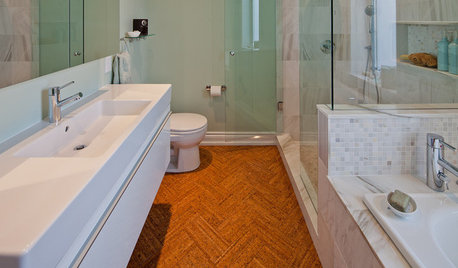
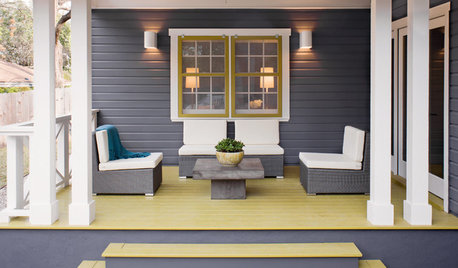
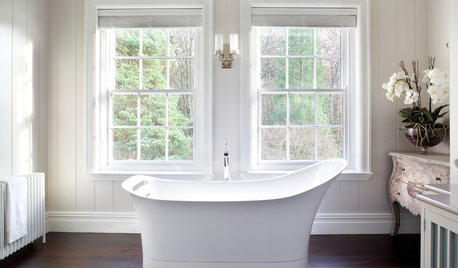
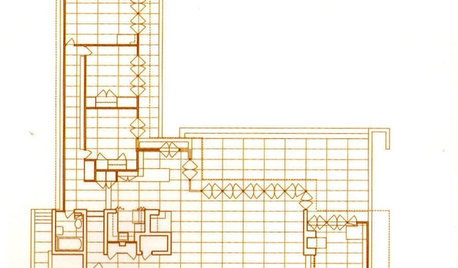

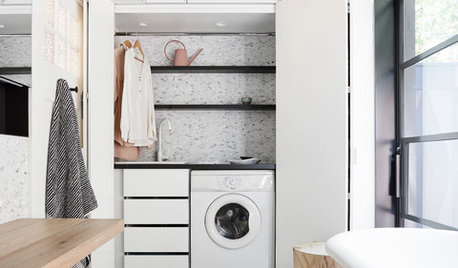



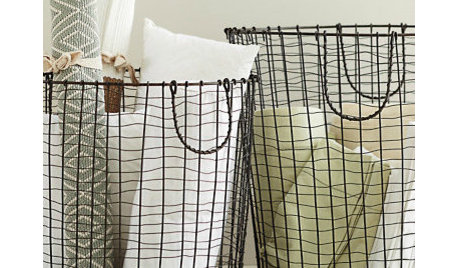






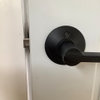
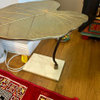
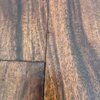
User